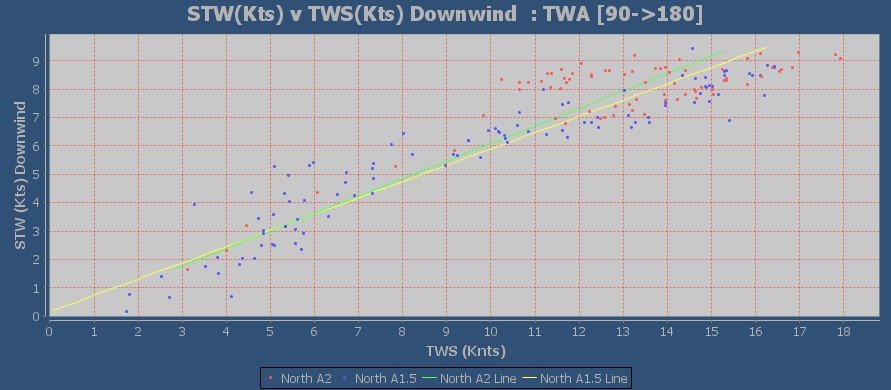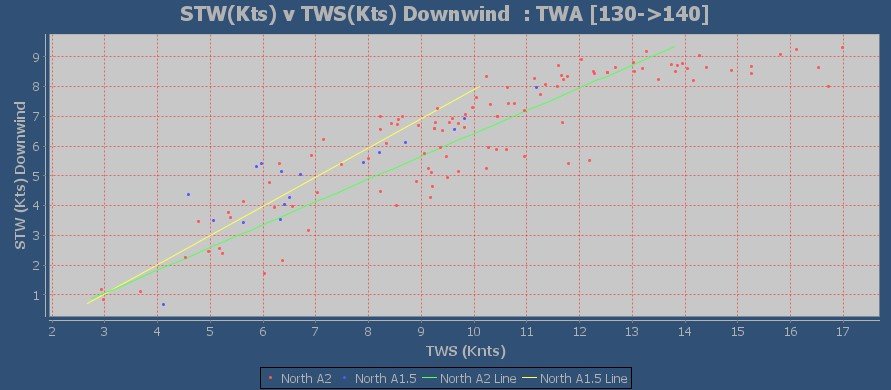I want to go fast every time !
In the last post we talked about the need to know when you are really going fast; not just thinking you are going fast.
If we know when we are fast should we not be able to work out exactly what we are doing to make the boat go fast ?
As we described in the last blog post we can record boat performance data and use that against time and location to show exactly when we are going our fastest.
If we log the settings applied at the time we are at our best we can start to repeat those settings and get to fast mode more quickly; and more repeatably..
That book of settings is often called the boats playbook.
Whats in the play book ?
Some or all of the following information is recorded within the playbook to allow the crew to quickly set the boat up in the optimum fashion.
Halyard tension; Main, spinnaker, jib etc
Rig Tension; forestay, backstay, Cunningham, outhaul, Vang
Car position; jib, traveller
Sheets; Jib, Spinnaker, Tack line, Mainsheet.
Crew position; heel to windward/leeward. Trim bow up/down.
Sail choice; No 1, No 2, A2, S5 etc
To record a lot of the settings we need to have marked our boat up.
Marking the boat up using means using tape, whipping line, stickers and vinyl lettering to place benchmarks that we can set our lines to when we sail.
For instance Jib Halyard trim could be achieve by putting a whipping in bright coloured thread or just plain black tape works on the halyard then using a sticker like the RWO one opposite to assess the level of tension on the line.
How does Rockit replicate the playbook ?
With Rockit we have created the configuration recording functionality.
We use these screens to record information about the way a boat is setup.
We can log the sails used, how the rig is setup and so forth. We can also make items active or inactive.
This gives us the ability to log whats active at any given point in time. This might be the sails we are using or the spinnaker that we use on a given leg of the course.
We also have functionality within Rockit allows us to edit the information after an event. So you can go back home and update which sails you used when and where.
Who drove when and how much tea they drank before they started driving.
How do we use this information ?
First of all we can create sail performance charts.
Rockit knows how relatively fast the boat was sailing and we have recorded the sails in use. Both those of the boat within the configuration and those that are actually actively being flown.
So we can build a chart to compare, for instance; the performance of our A2 spinnaker versus the A1.5 we have.
The plot on the right shows the sample data for a single recording session where both the A1.5 and A2 were used.
Its the same crew sailing the boat through a normal offshore race. The wind conditions vary. But on the face of it there was minor performance gain on that day to flying the A2 when the wind went above 8 knots True.
We can get more specific by narrowing the wind angle down.
In the image on the below we have restricted the data to only values between 130 and 140 degrees true.
Its a bit of an odd result. The A1.5 is rated for a lower max wind speed than the A2 so we stopped flying it at the higher wind speeds but the chart does confirm that at this wind angle in up to 10knots of breeze the A1.5 is the faster sail.
Or it was on that particular day.
The cross over chart on the right is from the North Sails web site and matches the sails we use..
How do we ask questions about our Sailing Performance ?
The previous example asks the questions at a recording session level.
We can ask the same question at boat level.
We have multiple recording sessions data to display against a single boat. Thats hundreds of data points.
There are dozens of days where we have captured the boat sailing the A1.5 and A2. We can build a plot based on all those data points and see how the two sails perform relatively.
So looking at the plot on the right we can see that relatively overall the A1.5 is quicker than the A2. Though we only have data up to about 16knots true wind speed for the A1.5. There are clearly some days where we were living dangerously risking putting the sail up in too much wind.
At the lower end of the wind scale the performance of the A1.5 is better - which is what we would expect as its a very light spinnaker.
But if we are more specific with the question we ask and look at a specific wind range we can see which would be the better sail to fly on any given day.
On this image plot we see that we don’t have any A1.5 data above 11knots true wind speed.
In the sub 11knots wind bands where we have flown both sails the A1.5 reacher is almost always faster.
Thats flying the sail on a relatively deep reach. We could ask the same question for a higher wind angle and see if we get the same result.
What else can Rockit tell us ?
The best thing about having all this information is that we can use it to our inform our decision making process.
We talked in the previous article about knowing when we are going fast. We know the configuration when we go fast we can repeat that.
Rockit will show you the best configuration based on past performance to use in a given set of wind conditions.
So if you concentrate and collect the information about your boat that affects its performance you can start to repeat that going fast performance.
Thats what Rockit is about making it easy to repeat fast sailing performance.
Bill/November 2022





